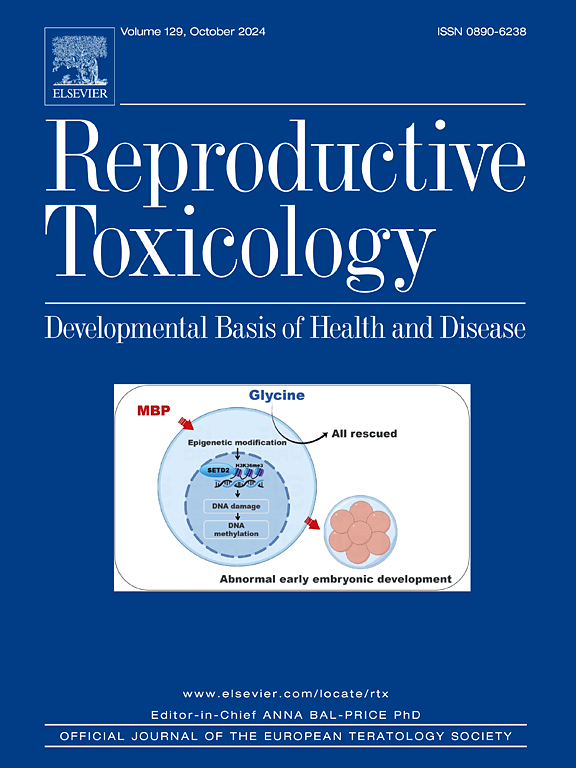Cannabinoid exposure does not alter estradiol biosynthesis in human KGN granulosa cells
IF 2.8
4区 医学
Q2 REPRODUCTIVE BIOLOGY
引用次数: 0
Abstract
Steroidogenesis is essential for ovarian physiology and reproductive health. Regulated by hormonal signals, it is susceptible to external modulators, notably environmental exposures. As cannabis becomes more accessible globally, its use among women of reproductive age has increased, yet the implications for reproductive endocrinology remain poorly understood and contradictory. In this study, we investigated whether cannabinoids modulate basal or stimulated estradiol secretion in the human granulosa cell line KGN. To characterize the endocannabinoid system (ECS) in these cells, we performed a meta-analysis of publicly available RNA sequencing datasets, revealing expression of key ECS components. KGN cells were cultured with or without cannabinoids in the presence of protein kinase activators, PKA (FSK), PKB (SC79), and PKC (PMA). Following cannabinoid and kinase stimulations, the media were collected and analyzed for estradiol concentrations via ELISA. We observed no significant changes in basal or activated estradiol secretion in response to THC or CBD. These findings were supported by RT-qPCR analysis showing no alteration in the expression of CYP19A1, the gene encoding aromatase, which catalyzes the conversion of androgens to estrogens in granulosa cells. Although cannabinoids have been shown to influence sex hormones in vivo, our data suggest that these effects are not mediated at the granulosa cell level. This study contributes to a better understanding of how cannabinoids may interact with ovarian steroidogenesis and reproductive function.
大麻素暴露不会改变人KGN颗粒细胞中雌二醇的生物合成
甾体生成对卵巢生理和生殖健康至关重要。它受激素信号的调节,易受外界调节剂的影响,尤其是环境暴露。随着大麻在全球范围内越来越容易获得,其在育龄妇女中的使用有所增加,但对生殖内分泌学的影响仍然知之甚少,而且相互矛盾。在这项研究中,我们研究了大麻素是否会调节人颗粒细胞系KGN的基础或刺激雌二醇分泌。为了表征这些细胞中的内源性大麻素系统(ECS),我们对公开可用的RNA测序数据集进行了荟萃分析,揭示了关键ECS组分的表达。在蛋白激酶激活剂PKA (FSK)、PKB (SC79)和PKC (PMA)的存在下,用大麻素或不含大麻素培养KGN细胞。在大麻素和激酶刺激后,收集培养基并通过ELISA分析雌二醇浓度。我们观察到THC或CBD对基础或激活雌二醇分泌的影响没有显著变化。这些发现得到了RT-qPCR分析的支持,表明颗粒细胞中编码芳香化酶的基因CYP19A1的表达没有改变,芳香化酶催化雄激素向雌激素的转化。虽然大麻素已被证明在体内影响性激素,但我们的数据表明,这些影响不是在颗粒细胞水平介导的。这项研究有助于更好地了解大麻素如何与卵巢类固醇生成和生殖功能相互作用。
本文章由计算机程序翻译,如有差异,请以英文原文为准。
求助全文
约1分钟内获得全文
求助全文
来源期刊

Reproductive toxicology
生物-毒理学
CiteScore
6.50
自引率
3.00%
发文量
131
审稿时长
45 days
期刊介绍:
Drawing from a large number of disciplines, Reproductive Toxicology publishes timely, original research on the influence of chemical and physical agents on reproduction. Written by and for obstetricians, pediatricians, embryologists, teratologists, geneticists, toxicologists, andrologists, and others interested in detecting potential reproductive hazards, the journal is a forum for communication among researchers and practitioners. Articles focus on the application of in vitro, animal and clinical research to the practice of clinical medicine.
All aspects of reproduction are within the scope of Reproductive Toxicology, including the formation and maturation of male and female gametes, sexual function, the events surrounding the fusion of gametes and the development of the fertilized ovum, nourishment and transport of the conceptus within the genital tract, implantation, embryogenesis, intrauterine growth, placentation and placental function, parturition, lactation and neonatal survival. Adverse reproductive effects in males will be considered as significant as adverse effects occurring in females. To provide a balanced presentation of approaches, equal emphasis will be given to clinical and animal or in vitro work. Typical end points that will be studied by contributors include infertility, sexual dysfunction, spontaneous abortion, malformations, abnormal histogenesis, stillbirth, intrauterine growth retardation, prematurity, behavioral abnormalities, and perinatal mortality.
 求助内容:
求助内容: 应助结果提醒方式:
应助结果提醒方式:


